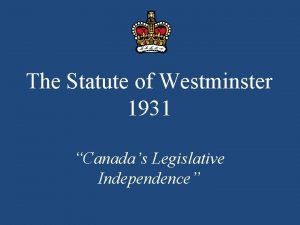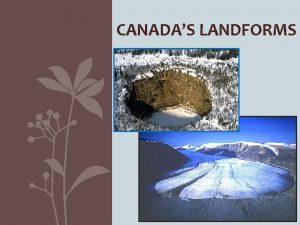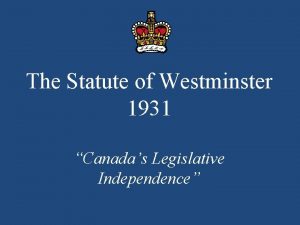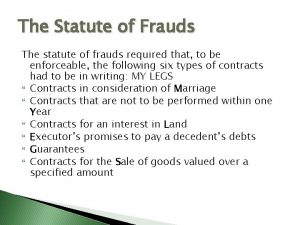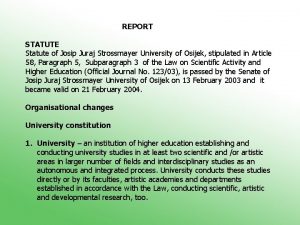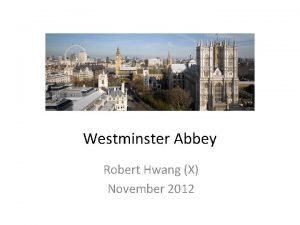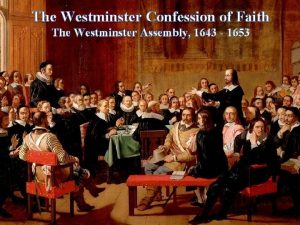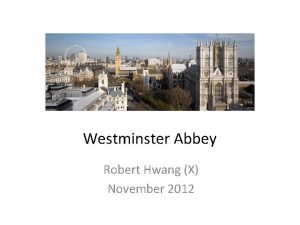The Statute of Westminster 1931 Canadas Legislative Independence











- Slides: 11

The Statute of Westminster 1931 “Canada’s Legislative Independence”

REMEMBER! Canada’s unwritten constitution includes the idea of Responsible Government, which means that, in most cases, the Crown can only exercise its powers on the advice of its elected ministers (i. e. the prime minister).

Before 1931 there was one, imperial, Crown for all of the dominions and territories of the British Empire. Even though the Dominion of Canada could make laws for itself, the British Parliament still had control over the country’s external affairs (i. e. declaring war)

This is why when Britain declared war in 1914 the entire Empire was automatically at war. One Crown acted for everyone. Australia New Zealand India Canada South Africa United Kingdom Newfoundland As prime minister of the United Kingdom, I have the right to ADVISE the British Crown to declare war on behalf of Canada and the rest of the empire.

The Statute of Westminster, adopted by the British Parliament in 1931, said that the King could only be advised about a particular dominion by that country’s prime minister. Instead of only being the British King, George V suddenly became King of each separate dominion – and could only take advice from their prime ministers

This meant that only the Canadian prime minister could advise the King on Canadian matters. This meant that the King was now separately the King of Canada. Britain could no longer pass legislation on behalf of Canada.

Another way of thinking about it: I am King George V. Before the Statute of Westminster (1931) I was King of the United Kingdom (Emperor of India) only. One person, one Crown.

After the Statute of Westminster I also became, separately, King of Canada, Newfoundland, Australia, New Zealand, South Africa, and the Irish Free State (who were now able to legislate for themselves without British interference). One person, seven Crowns!!

This is why things were different when the Second World War was declared Separate & Equal Crowns As prime minister of Canada, with the confidence of the Canadian Parliament, I alone now ADVISE the Canadian Crown to declare war (as I did in 1939). Since the Statute of Westminster (1931), as prime minister of the United Kingdom, I can only advise the British Crown for Britain (UK) and parts of the Empire that don’t have selfgovernment.

Canada’s Declaration of War on the German Reich In Canada, only the Sovereign (King or (1939) Queen) can declare war. Appro v Georg al by King e VI a of Can s King ada Responsible government demands that war can only be declared on the advice of an elected representative (prime minister). Prime Canad Minister of a King to advising the decla re war

This is why. . . The British Crown declared War on Germany September 3 rd, 1939 The Canadian Crown declared War on Germany September 10 th, 1939
 Statute of westminster
Statute of westminster What are 2 non legislative powers of congress
What are 2 non legislative powers of congress 90 of the canadian population lives within
90 of the canadian population lives within What economic system is canada
What economic system is canada Whats canadas longest river
Whats canadas longest river Rafael artacho cañadas
Rafael artacho cañadas Temperatura cima teide
Temperatura cima teide Canadas 5 regions
Canadas 5 regions Canadas physical regions
Canadas physical regions Canadas landforms
Canadas landforms Who is canadas head of state
Who is canadas head of state Canadas climate
Canadas climate
